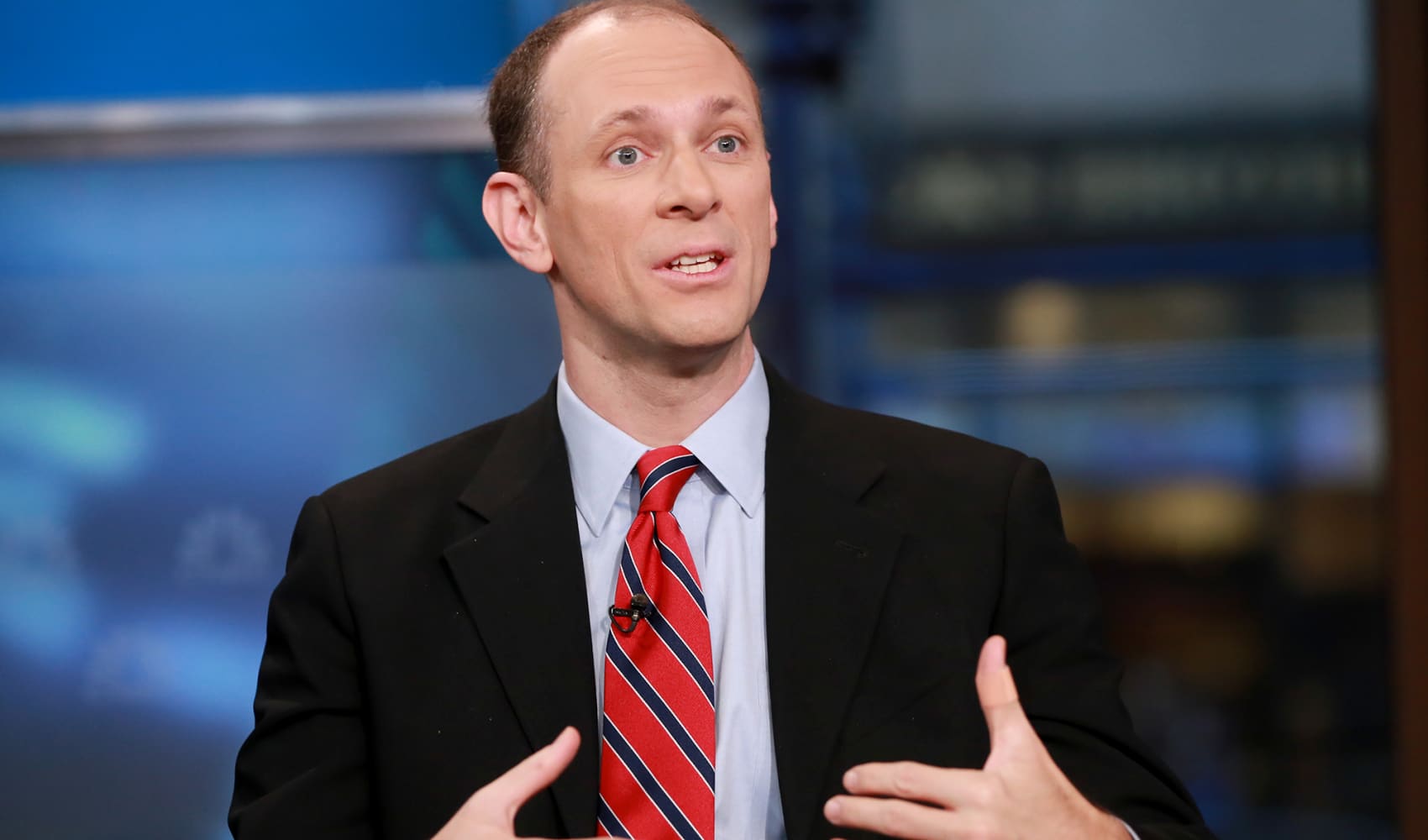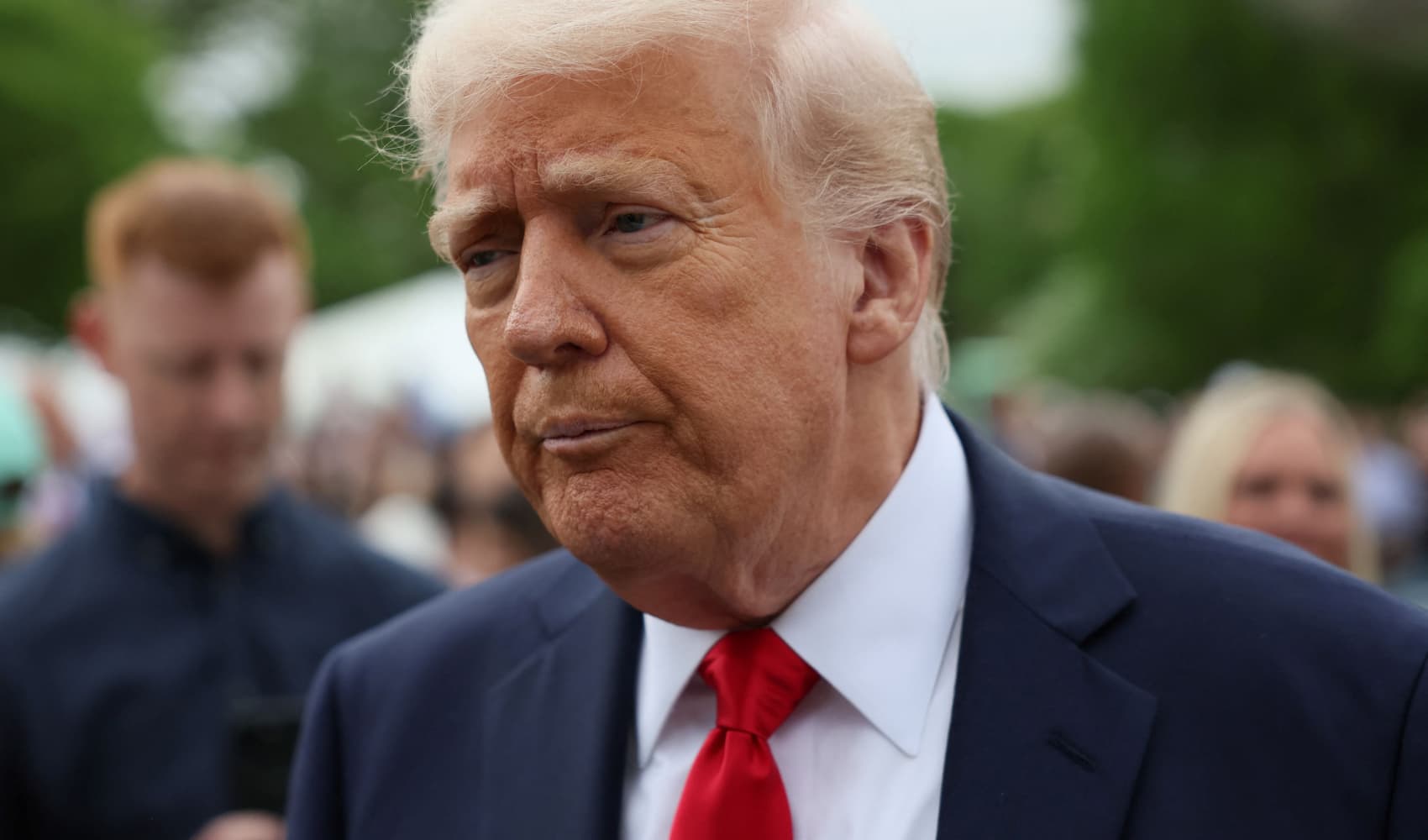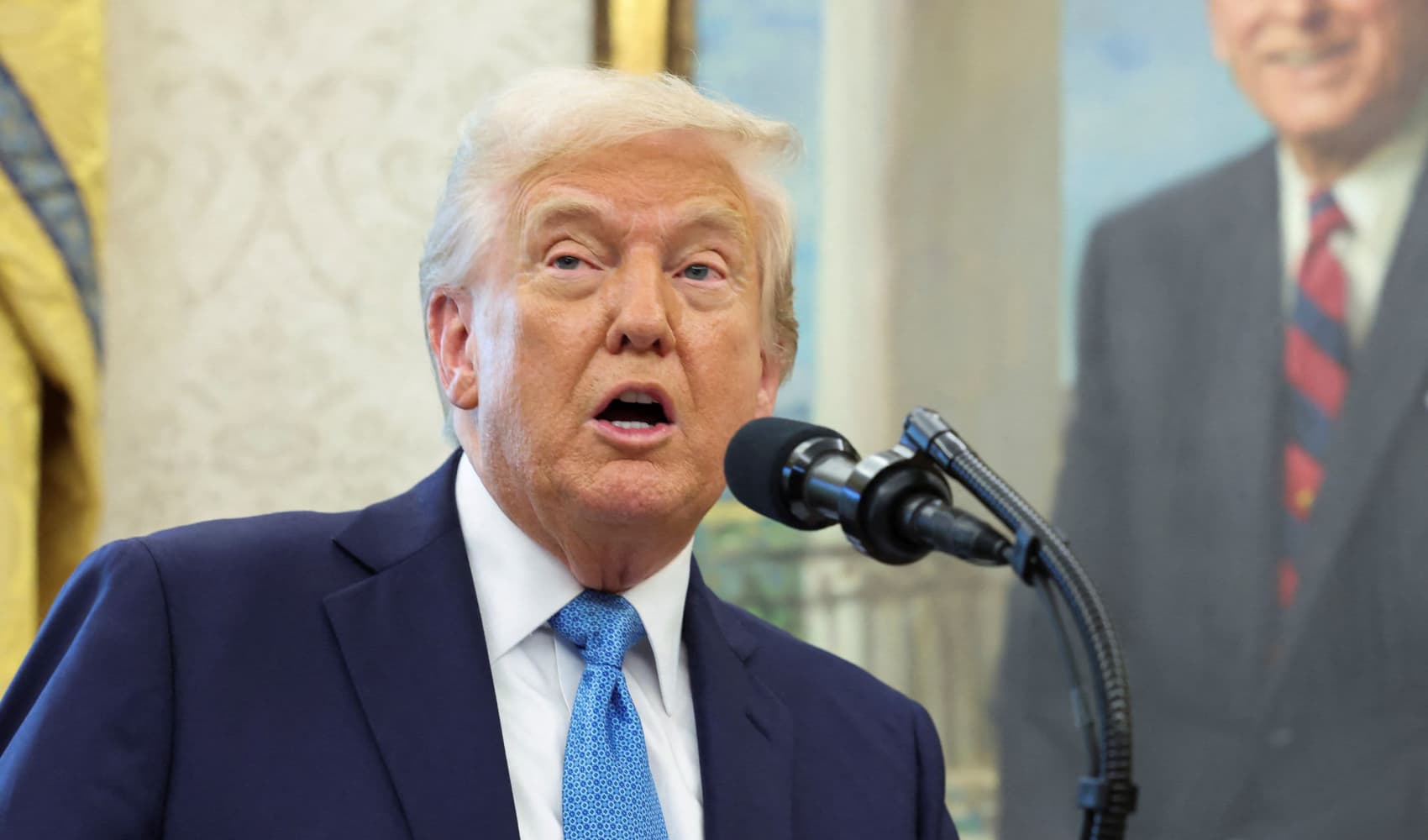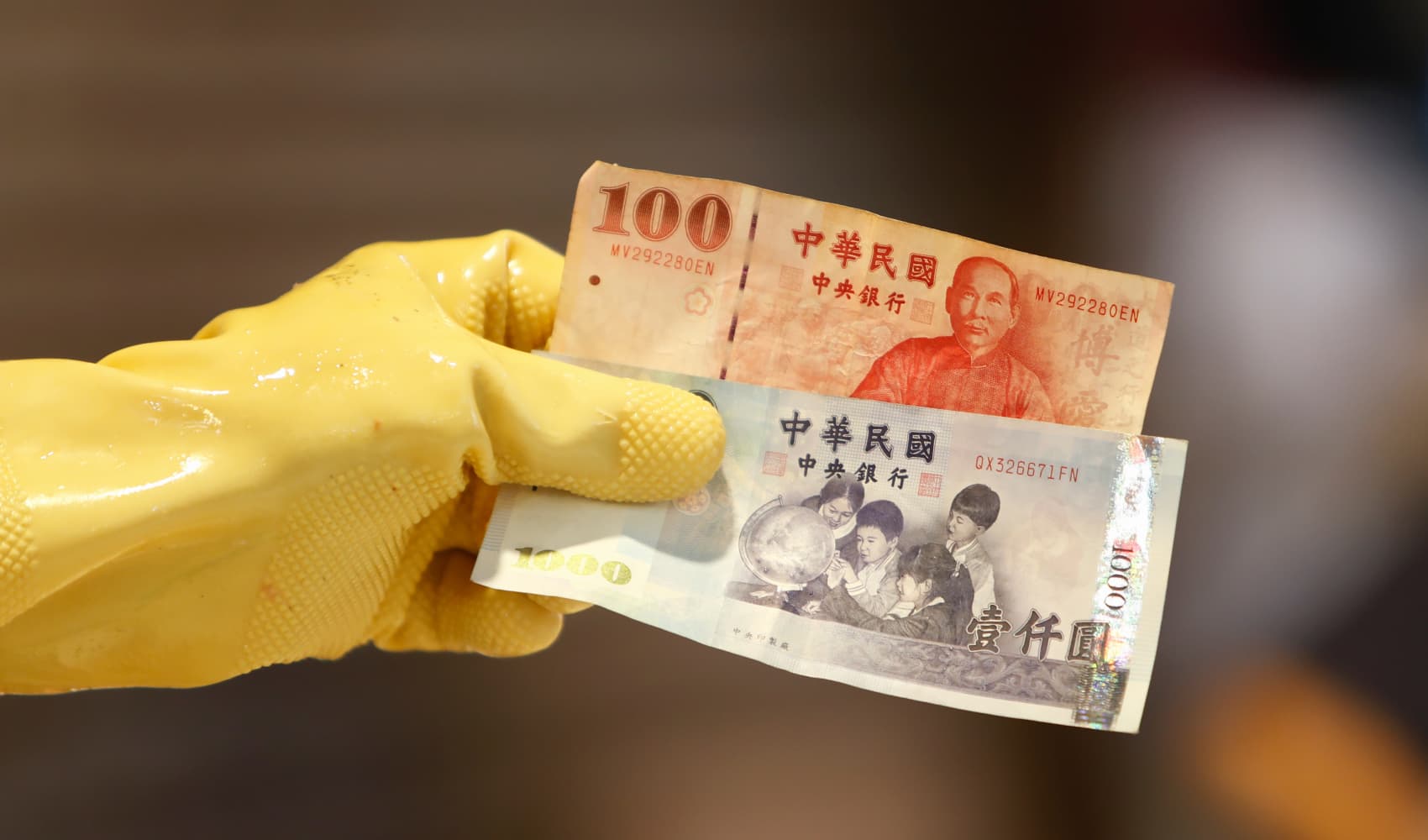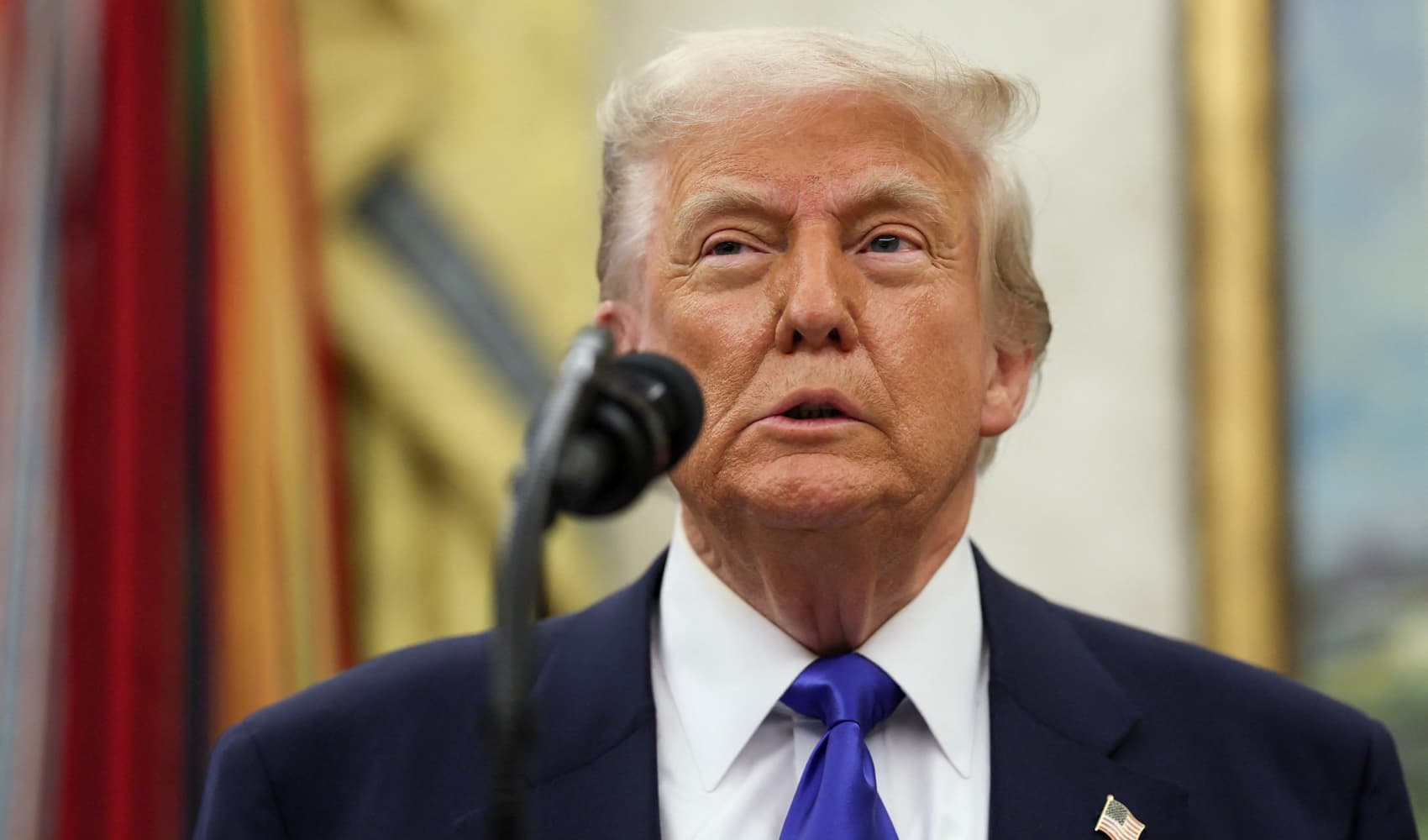Trump's Fed Threat: Market Upheaval Incoming? | CNBC Daily
CNBC Daily Open: Trump's Fed Intervention Threat Rocks Markets
Introduction: A Storm Brewing in the Financial Seas?
Good morning, market watchers! It’s another day of economic uncertainty, and the ripples from Donald Trump’s latest pronouncements are certainly being felt. The big headline today? President Trump's renewed calls for the Federal Reserve to slash interest rates, a move that's sparking serious debate – and potential upheaval – in the financial world. But it's not just the Fed that's facing scrutiny; China's economic strategies, corporate earnings, and even internal shakeups within the US government are all contributing to a complex and potentially volatile landscape. Are we headed for smooth sailing, or is a financial squall on the horizon? Let's dive in!
Trump's Renewed Pressure on the Fed: Crossing a Line?
President Trump has once again publicly pressured Federal Reserve Chairman Jerome Powell to lower interest rates. This isn't new, but the persistence is concerning. Why? Because the independence of the central bank is seen as crucial for maintaining economic stability. Think of the Fed as the thermostat for the economy. If the president keeps fiddling with it, the temperature might swing wildly!
The Importance of Central Bank Independence
An independent central bank, free from political interference, is a cornerstone of a healthy economy. They're supposed to make decisions based on data, not political whims. Imagine a referee in a sports game taking instructions from one of the teams – chaos, right? The same applies to the economy.
CNBC Survey: Growing Unease About Trump's Economic Policies
A recent CNBC survey reveals a growing disapproval of President Trump’s handling of the economy. This sentiment could be a significant factor in the upcoming elections. Are voters starting to question whether the president's policies are truly benefiting them?
The Impact on Investor Confidence
Negative sentiment can impact investor confidence, leading to market volatility. If people don't believe in the long-term health of the economy, they might pull their money out, triggering a downturn. It's a bit like a crowded theater – if someone yells "fire," everyone rushes for the exits, even if there's no actual fire.
China's Steady Hand: PBoC Holds Loan Prime Rates
While the U.S. grapples with internal economic pressures, the People's Bank of China (PBoC) has decided to keep its loan prime rates steady. This decision signals a cautious approach to economic management amidst global uncertainty.
Navigating the Global Trade Landscape
China's economic stability is crucial, especially given its role in the global trade landscape. Their decisions can have far-reaching consequences for economies around the world. Think of it like a giant ship – if it changes course suddenly, it can create huge waves that affect everyone else.
China's Retaliation Threat: A Geopolitical Chess Match
China has warned it will retaliate against any country that enters into a deal with the U.S. aimed at isolating Beijing. This escalation of tensions adds another layer of complexity to the global economic picture. Is this the start of a new Cold War, but this time with economic weapons?
The Implications for Global Trade
Such retaliatory actions could disrupt global trade flows and create new barriers to economic cooperation. Imagine building a wall between two countries – it hinders the movement of goods, services, and people. This could lead to higher prices for consumers and reduced profits for businesses.
Goolsbee's Warning: Economic Activity Could "Fall Off" This Summer
Chicago Fed President Austan Goolsbee has cautioned that economic activity might "fall off" during the summer months. This is a concerning signal from within the Federal Reserve itself. Is this just a seasonal dip, or a sign of deeper economic troubles?
Seasonal Adjustments vs. Underlying Problems
While seasonal adjustments are common, Goolsbee's warning suggests a potential underlying weakness in the economy. It's like a doctor noticing a persistent cough – it might just be a cold, but it could also be something more serious that needs attention.
State Department Overhaul: A Shift in U.S. Foreign Policy?
The Trump administration is reportedly considering overhauling the U.S. State Department. Such a move could significantly alter U.S. foreign policy and its approach to international relations. How might this impact global trade and investment?
The Role of Diplomacy in Economic Stability
Diplomacy plays a critical role in maintaining economic stability. Strong relationships between countries can foster trade and investment, while strained relationships can lead to tariffs and sanctions. A stable international environment is conducive to economic growth.
Earnings Season: Tesla and Alphabet Under the Spotlight
This week, all eyes are on Tesla and Alphabet as they announce their first-quarter earnings. These reports will provide valuable insights into the health of the tech sector and the broader economy. Will they deliver positive surprises, or will they disappoint investors?
The Tech Sector as an Economic Barometer
The tech sector often serves as an economic barometer, reflecting consumer confidence and business investment. Strong earnings from tech giants like Tesla and Alphabet can boost market sentiment, while weak earnings can have the opposite effect.
The Bedrock of a Functional Economy: Central Bank Independence
As mentioned earlier, an independent central bank is widely considered the foundation of a functional economy. Their ability to set interest rates without political interference is essential for managing inflation and promoting sustainable growth.
Low Interest Rates: A Double-Edged Sword
Corporations and consumers generally favor low interest rates because borrowing becomes cheaper. However, artificially low rates can also lead to inflation and asset bubbles. It's a delicate balancing act.
The Risks of Artificially Low Rates
While low interest rates can stimulate economic activity in the short term, they can also create long-term problems. Artificially low rates can encourage excessive borrowing and investment in risky assets, leading to a bubble that eventually bursts. Think of it like eating too much sugar – it gives you a quick energy boost, but you eventually crash.
The Fed's Dilemma: Balancing Growth and Inflation
The Federal Reserve faces a constant dilemma: how to balance the need for economic growth with the risk of inflation. Setting interest rates is their primary tool for managing this delicate balance. It's like walking a tightrope – too much focus on one side, and you risk falling off.
Data-Driven Decision Making
The Fed should base its decisions on data, not political pressure. This requires careful analysis of economic indicators such as inflation, unemployment, and GDP growth. It's like a doctor making a diagnosis based on a patient's symptoms and test results, not on what the patient wants to hear.
The Global Impact of U.S. Economic Policy
U.S. economic policy has a significant impact on the global economy. As the world's largest economy, the U.S. can influence trade flows, investment patterns, and even geopolitical stability.
A Connected World
In today's interconnected world, economic policies in one country can have ripple effects across the globe. It's like a complex web – if one strand is pulled, the entire web can be affected.
Navigating Uncertainty: A Call for Caution
Given the current economic uncertainties, investors and businesses should proceed with caution. Diversifying investments and carefully managing risk are crucial for weathering potential storms. It's always a good idea to have a backup plan, just in case.
The Importance of Due Diligence
Before making any major investment or business decision, it's important to conduct thorough due diligence. This includes researching the market, assessing the risks, and seeking professional advice. It's like doing your homework before taking a test – you're more likely to succeed if you're prepared.
Watching the Markets: Staying Informed
Staying informed about the latest economic developments is essential for making sound financial decisions. Regularly monitoring market news and economic indicators can help you anticipate potential risks and opportunities. Knowledge is power, especially in the world of finance.
Reliable Sources of Information
Be sure to rely on reputable sources of information when monitoring the markets. Look for news outlets with a track record of accuracy and impartiality. Avoid relying on social media or unverified sources, as they can often spread misinformation.
The Road Ahead: A Test of Economic Resilience
The coming months will be a test of economic resilience. How the U.S. and other major economies navigate these challenges will determine the course of global growth and stability. Will we see a period of sustained prosperity, or are we headed for a downturn?
Conclusion: Key Takeaways for Today's Market
Today’s market snapshot reveals a complex interplay of factors. Trump's pressure on the Fed, coupled with economic anxieties, China's strategic moves, and earnings reports from giants like Tesla and Alphabet, paint a picture of potential market turbulence. The independence of central banks remains critical, and investors must proceed with caution, staying informed and diversifying their portfolios. This is not a time for complacency, but rather for informed and strategic decision-making. The economic climate is changing rapidly, and we need to stay alert to navigate the road ahead successfully.
Frequently Asked Questions (FAQ)
Here are some frequently asked questions to further clarify the complex issues discussed in this article:
- Why is central bank independence important?
Central bank independence ensures that monetary policy decisions are based on economic data rather than political considerations. This helps maintain price stability and promotes sustainable economic growth.
- How could Trump's pressure on the Fed impact the economy?
Undermining the Fed's independence could lead to erratic monetary policy, increased market volatility, and ultimately, reduced investor confidence.
- What are the potential consequences of China's retaliation threats?
China's retaliatory actions could disrupt global trade, lead to higher tariffs, and create barriers to economic cooperation, ultimately hurting businesses and consumers worldwide.
- What should investors do in the face of economic uncertainty?
Investors should diversify their portfolios, carefully manage risk, and stay informed about the latest economic developments. Consider consulting with a financial advisor to create a personalized investment strategy.
- How can I stay updated on the latest market news and economic indicators?
Follow reputable financial news outlets, such as CNBC, Bloomberg, and Reuters, and regularly monitor economic indicators like inflation rates, unemployment figures, and GDP growth.

